Life, Liberty, Football
Streameast’s crusade to rescue fans from the prohibitive costs of watching live football
NFL Devotion in the Streaming Age
I tune in to watch NFL football every Sunday, as I have for most of my life—just like millions of others. For many Americans, myself included, watching NFL football feels like a sacred birthright. Conditioned by the days when it meant little more than plopping onto the couch, turning on the TV, and questioning why the hell your team decided to run the ball on 3rd and 10, things feel complicated these days.
Nowadays, the sanctity of watching the NFL is tangled in a disjointed streaming landscape, a byproduct of the league’s relentless pursuit of growing the sport’s relevance globally. This once-hallowed ceremony of athletic prowess has become an overflowing sea of paywalls and blackout restrictions, turning what once felt sacred into a pilgrimage for access.
Fans now find themselves having to navigate a labyrinth of streaming subscriptions, wondering if they should pass around a collection plate just to afford NFL Sunday Ticket and witness their team blow another 4th quarter lead.
In a country where we can freely choose our religion and worship without a burden, why should my weekly pigskin sermon demand such a heavy tithe? What was once a straightforward devotion has morphed into a costly tribute to the NFL's cabal of TV-rights overlords.
Whew… steps down from soap box…
Look, no one’s pretending the NFL was ever a free ride. There’s always been a price—whether it be paying for cable or enduring that one friend who insists on providing fantasy updates during every commercial break. But now, “price” feels like a polite way of saying “ransom.” It’s like Roger Goodell (long-time, broadly-disliked NFL commissioner) sat down with his lieutenants and said, “You know what fans love? Confusion and poverty.”
So why are millions of fans now risking malware just for a seat at the football supper table? I’ll explain. You want to catch all 285 NFL games this season? No, just me? Okay, fair… but walk with me here. This is what you’ll need:
YouTube TV: Six months at $72.99/month for every in-market game on Fox, CBS, NBC, ABC, ESPN/ABC (except Week 7) and NFL Network = $437.94
Amazon Prime: Five months at $8.99/month for Thursday Night Football (from Week 2 on) and one Wild Card playoff game = $44.95
ESPN+: One month at $11.99/month for that pesky (arbitrary) Week 7 Monday Night game = $11.99
Peacock: One month at $7.99 for the Week 1 Thursday Night game = $7.99
Netflix: One month at $6.99 for the two Christmas Day games = $6.99
That adds up to $509.86 for the season, and covers a lot of football.
However, if you want the full NFL experience, including all the out-of-market Sunday afternoon games1, there’s more. To actually see it all, you’ll need NFL Sunday Ticket, now conveniently priced at "Why am I doing this to myself?": $379 if paired with a YouTube TV subscription.2
The grand total? $887.86:
Yep, that’s right—nearly $900 to watch every NFL game3 over the course of the 2024 season. From Week 1 (9/5/2024) to the Super Bowl (2/9/2025), there are 158 days. On a prorated basis, you’re shelling out $2,053.38 per annum, $171.11 per month or $5.63 per day.
So, take your pick: live football, or your daily pumpkin spice latte with oat milk and an extra shot?
Enter Streameast: The Silk Road for Live Sports
If you’ve never heard of Streameast, congratulations—you’ve probably been paying full price for your football, and that’s… well, that’s unfortunate. Streameast, peddling NFL streams to the masses faster than Ross Ulbricht could ever dream of delivering Molly to your doorstep, and pissing off the NFL’s army of lawyers more than Jerry Jones at a salary cap meeting, is the answer—or, at least an answer—to the dilemma of choosing between live NFL football and your precious pumpkin coffee.
So, what, actually, is Streameast? I’ll start with what it isn’t—sanctioned, for one, but more importantly, it won’t cost you a dime. What it is, is essentially the underground speakeasy of sports streaming, serving live NFL games (and, quite literally, all live sports) for free. No subscription, no blackout restrictions, just football… and baseball and basketball and even the July 4th Hot Dog Eating Contest.
The catch? It’s about as legal as an MP3 file of 50 Cent’s In Da Club ripped from LimeWire back in the day.4 And, like all things too good to be true, it comes with risks—think malware, spammy pop-ups, offshore gambling sites, etc.
I first discovered Streameast 3 years ago, in 2021. I remember—as a last-ditch effort to catch the Cowboys game (yes, I’m a Cowboys fan)—Googling “free NFL streaming sites,” which eventually led to a Reddit thread in none other than... r/Piracy.
If I had to guess, I’d say it’s being run from somewhere in eastern Europe (hence the ‘east’ in ‘Streameast’)—perhaps Russia.5 As to how long the site’s been around, I’ve heard 2013 was when it got its start.
Now, navigating Streameast is... interesting. To the uninitiated, the website itself can be overwhelming; every other click opens a new window to some sketchy ad, gambling website, and even—somewhat hilariously—Fubo TV (poor Fubo):
Of course, I’d never use Streameast myself6, but a little birdie told me it’s always been like this—a chaotic mess of spammy windows and generally questionable UI/UX. Despite the digital circus, if you can avoid clicking on any links, you ultimately find your way to your game of choice, Streameast delivers. It ain’t pretty, but—much to the dismay of the legitimate streaming services—it works.7
Make no mistake, Streameast isn’t exactly operating out of the goodness of its pirate heart. It’s obvious Streameast has a business model of its own—built on ads, redirects, a premium membership tier8, and, let’s be real, probably data-harvesting bots. I mean, think about it: if they’ve already ventured into the promised land of blatantly breaking copyright laws, why not monetize their position? At minimum, the site needs to generate some revenue to cover its operating costs.
Regardless of its profitability, the bottom line is this: although streaming live sports on Streameast is illegal, it’s free—and it works.
The Leader of the Live Sports Streaming Pirates
Despite the risks, millions of fans flock to illegal sports streaming sites every day. To call the pirated streaming of NFL games a proliferation might even be an understatement. Per a February 2024 Harvard Business Review report:
While many people watch the Super Bowl and NFL games legally each year, through cable subscriptions, local television, or NFL Sunday Ticket, a growing number of people are using another method: illegally pirated live streams. The piracy-tracking firm VFT estimates that 17 million viewers watched last Sunday’s Super Bowl on illegal pirate streams.
In fact, a 2023 Oddspedia survey of 3,200 NFL fans found that 39% use paid streaming services to watch football while a whopping 35% of respondents regularly watch NFL games on pirate streams:
Furthermore, given the high price of legal or official options, 93% of fans feel no moral objection to watching illegal NFL streams:
If that’s the case, then the real question remains: How in the world is Streameast still up and running after all these years? Is it simply the best-kept secret for sports fans ‘in the know’?
Let’s not be naïve—such a blatant affront to the legal frameworks of live sports broadcasting doesn’t just fly under the radar. No, Streameast operates under constant threat from legal authorities.9 So, how does Streameast persist? Several ways:
Backup Domains: Streameast uses an unusually large number of backup domains—over 400, according to their own admission. When one domain is seized, the site quickly switches to another.
Global Decentralization: Streameast leverages a global infrastructure, hosting its services in jurisdictions that are harder for U.S. authorities to reach, and they are particularly adept at choosing locations and services that offer minimal interference.
Strategic Communications: Streameast’s operators are experts at dodging takedowns. They don’t wait around. Using alternative platforms like Discord, they notify users of new domains almost instantly.
In a splintered market where the less organized, more reactive sites falter (suffering longer downtimes or becoming inaccessible after domain seizures), Streameast remains uniquely resilient. With its family of domains, it occupies a commanding share of the market—over 20%—making it the undisputed leader in the space:
But let’s face it: internet piracy proliferated long before Streameast came along and will continue to exist long after. For now, Streameast just happens to be the most notorious. They aren’t breaking the law any more or less than other pirated sites—they’re simply the biggest, and perhaps the most well-run. With unique traffic for September 2024 alone estimated at around 15 million visits, Streameast attracts tens of millions in total visits each month:
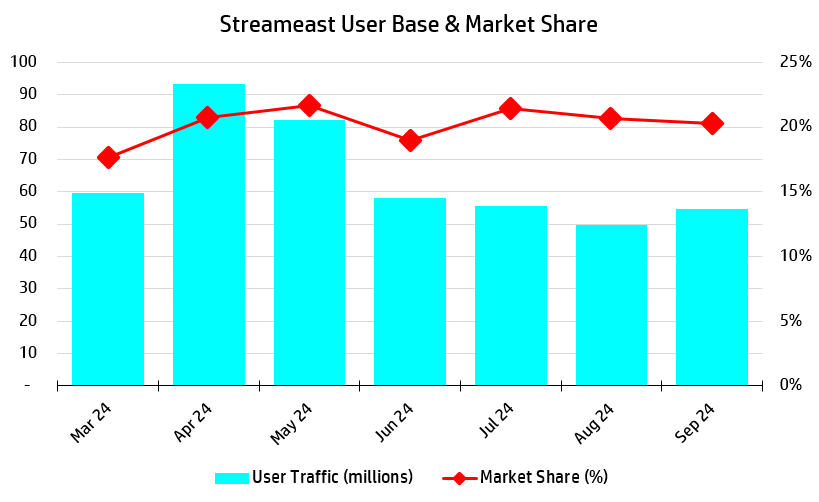
Anecdotally, I’ve noticed a growing awareness of pirated streaming domains in certain social media circles over the past couple years. And it’s not just me—billionaire Mark Cuban tweeted about it in May 2023, sharing his curiosity on the topic:
One response from the account of a live sports data analytics company called FX1 implied that piracy is responsible for over $20B in lost revenue for the sport streaming industry:
But perhaps the most surprising case of public awareness came when I stumbled across this gem of a tweet, featuring none other than LeBron James—yes, the near-billionaire himself—casually sitting courtside, watching a game on his laptop via Streameast:
Evidently, this infuriated some who would prefer Streameast remain under wraps. But realistically, those concerns are misguided. If Streameast is making the rounds on social media, I’m of the view that the cat’s out of the bag, and the feds have long been aware.
And if LeBron’s courtside streaming didn’t make that obvious, here’s more proof: Streameast even has its own verified Twitter/X account, launched March 2024, with over 3,000 tweets in just six months:
Call it what you want—insanity, hiding in plain sight, mockery—what’s abundantly clear is that Streameast’s operators aren’t afraid of their adversaries.
Willingness to Fight for Its Cause
Fast forward to mid-August 2024, Streameast is now firmly in the crosshairs of federal authorities. Just a couple of weeks before the NFL season kickoff, the authorities, perhaps predictably (given the upcoming start of the football season), made their move. As the kingpin of pirated streaming, Streameast was recently targeted by Homeland Security Investigations (HSI), who attempted to seize its domains.10
Now, I would never suggest that this push was orchestrated at the behest of the NFL’s legal team in a desperate, last-ditch effort to protect their carefully crafted streaming deals and partnerships. Nope, I wouldn’t dare make such an audacious claim (wink wink, nudge nudge). But in all seriousness, don’t make it so obvious, right?
At any rate… true to form, the ‘keep Streameast a secret’ folks wasted no time blaming their peers for blowing the lid off (as seen in the comments on this post):
In my view, it’s unlikely that the shutdown had much to do with the public's growing awareness of pirated streaming sites. Federal authorities were aware of Streameast long before it became widely known. As I see it, the timing of Homeland Security Investigations' (HSI) recent action was more about protecting the NFL’s billion-dollar interests than anything else.
Now, consider the possibility that Streameast has been intentionally garnering attention, and perhaps they’ve long been prepared to face legal battles and domain seizures. Streameast’s immediate response, posted on Discord, certainly suggests as much:
As you may know, many of our domains were seized by the US government last night. As the only free streaming site in the world that truly values user experience and quality, it was no coincidence that this happened to us.
Despite the existence of countless fake, fraudulent, infected, and misleading streaming sites, this attack was solely targeted at the real addresses of Streameast.11
However, this is not a problem. As you already know, we've shared our new address with you. They need to see that they can't stop us this way. We own over 400 domains in total, and we will be activating and sharing most of these with you throughout the week. We will never give up the fight. Our fight will continue until sports become affordable for everyone. We promise that once this is achieved, we will permanently shut down all Streameast services.
If you want to support us during this time, you can share our new address on social media and with your friends.
Indeed, within hours, the Streameast operators had circumvented the domain seizures by establishing several new mirrors, which are shared through the official Streameast Mirror List:
Once up and running again, then came the defiant messaging via Twitter/X:
And then some more…
Believe it or not, Streameast is now going on the offensive—through legal channels. Following law enforcement’s futile efforts, Streameast informed TorrentFreak that obtaining a copy of the seizure warrant required an extensive effort and that the difficulty they faced in obtaining the warrant raised more questions than it answered:
Further, Streameast is planning to appeal the matter in court:
[The warrant] did not provide any reasons for the shutdown, which is quite intriguing. As a result, we have doubts about the legitimacy of this decision, and we will be filing an appeal in the coming days … We’ve never received any legal threats in the past.
As for how this all shakes out? Well, I’m no legal expert. But, if nothing else, the fact that Streameast is willing to take up legal arms and battle it out with the U.S. Justice Department shows supreme confidence in the security of their position.
One thing’s for sure—Streameast walks the walk. Not only have they kept streams running amid legal threats and domain seizures; they’ve also persisted in talking the talk, putting both law enforcement and sports leagues on notice. And I’ll call what it is: beyond simply getting their message across, they’re trolling. Not only have they been trolling authorities and the NFL, they seem willing to call out each and every adversary:
If going toe-to-toe with Dana White and the UFC doesn’t scream ironclad conviction, I’m not sure what does. And, clearly, it’s not just about football—Streameast’s mission spans the expanse of live sports:
While we can somewhat understand the need to pay in today’s world, it’s clear that the current prices are unrealistic. If a sports fan wants to watch all sporting events, including UFC and boxing PPVs, the monthly cost is almost $1500.
The point is this: Streameast is collectively saving sports fans billions and this doesn’t seem to be changing anytime soon. Claiming they’re not in it for the money, they have become something of a digital Robin Hood on a mission to make sports streaming affordable to everyone. They’ve vowed to continue operations until streaming prices come down.
Alongside the other major sports leagues, the NFL is undoubtedly watching this proliferation of pirated streaming from the sidelines—likely fuming—as millions of fans bypass their legal streams in favor of pirate platforms like Streameast. But, what the hell are they going to do? No, really, I’m asking…
Milking Fans Dry: Why the NFL’s Streaming Model Makes It Vulnerable
Moreover, what the hell did the NFL expect? So long as the price and complexity of legal viewership keeps climbing, piracy will remain an enticing option for all fans. The NFL’s current approach may even push more fans into the arms of platforms like Streameast. The logistical headache of juggling subscriptions to multiple services only makes it worse. While Streameast provides a solution for frustrated fans, it also highlights the glaring shortcomings of the NFL's own strategy.
Oddspedia’s survey revealed that nearly a third of illegal stream users choose piracy simply for its convenience:
With Streameast, everything is accessible in one place. Cost aside, it’s simpler and more convenient once users overcome their fear of malware.
What’s driven this fragmentation of NFL streaming? Simple: money. The NFL's vision of broadcasting games in every corner of the world is paramount to Goodell’s goal of $25 billion in revenue by 2027. YouTube TV, ESPN, Amazon Prime, Peacock—these partnerships are designed to transcend regional boundaries, and align with the NFL’s strategy of global growth. And while this strategy is working, at what cost? Who bears the burden?
Now, you might wonder why I’m singling out the NFL when piracy is an issue across all sports leagues. I’ll get to that, but first: I’m not here to demonize capitalism or cry ‘big bad corporation’. Having spent my career in finance, I understand—and even subscribe to—capitalism’s virtues.
Global growth in NFL fandom is a good thing overall. And yes, credit where it’s due—the NFL is making record profits. Bravo, Roger Goodell. You’ve turned an addictive product into a money machine—Philip Morris would be proud.
But I believe in treating your core customers like royalty. So, what I am here to criticize is the NFL’s blatant disregard for the growing viewership burden being placed on U.S. fans—its cash cow and the very lifeblood of the league.
The rising cost to consumers isn’t just a byproduct of corporate greed—it’s a downstream effect of the NFL’s escalating demands in its contracts with streaming services. As the league pushes for higher fees to fuel its global expansion and revenue targets, streaming platforms are forced to pass those costs onto viewers.
That said, let me lay it all out.
Loyal U.S. Fans Are Paying the Price of Growth
Through its Global Markets Program, the NFL remains focused on expanding its viewership internationally. However, it seems these ambitions are coming at the expense of the NFL’s core audience at home. I’ll frame it this way: the NFL is squeezing the wallets of its most loyal fans to chase new viewers abroad. I think of it as a sort of growth tax being levied on U.S. fans.
Take NFL Game Pass for example—an option to view all 285 games this season. It’s available at a fraction (~$200/season) of the cost of domestic streaming, but only for viewers outside the U.S. or China. The core U.S. viewer—the lifeblood of the league—is being priced gouged in favor of a global strategy, and this message is coming through loud and clear.
Moreover, the cost to watch NFL games is significantly higher than the other three major U.S. sports leagues. In fact, the cost to watch all NFL games is greater than that of all 3 other leagues combined:
NBA League Pass costs, at most, $150 per season
MLB.TV costs roughly $140 for the entire season
NHL Center Ice costs $210 per season
So, for $500, you can watch—legally—every single game of the other three major sports combined while it costs nearly $900 to do the same with respect to NFL games. Not only that, but the viewing experience of the other three sports is far simpler and less complex.
Sure, one could argue that this is justified by the NFL’s relative popularity. After all, the NFL did account for 93 of the 100 most-watched U.S. TV broadcasts in 2023:
Indeed, the NFL is the most popular sport in America, and has been since the early 1970s:
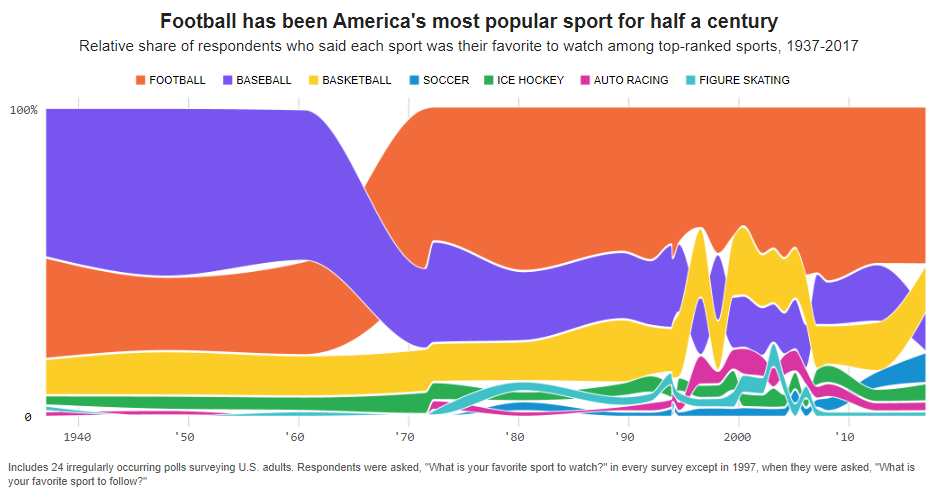
However, as the graphic above shows, the NFL hasn’t actually gained any relative popularity since the 1970s. Meanwhile, NFL streaming costs have risen considerably over time:
But if we zoom out, beyond the post-COVID bump in NFL ratings, viewership has actually remained relatively stagnant:
While there has been an upward trend in the last 6-7 years, I’d argue that this growth is, at least in part, attributable to a recovery in viewership among previously disengaged fans as opposed to growth as a result of newfound accessibility or the recruitment of new audiences.
Think of the proverbial 55-year-old bald neighbor with a Blue Lives Matter bumper sticker who boycotted when players knelt for the anthem but has since returned to his regular Sunday ritual.
Beyond the return of these fans, the rise of sports betting has become a powerful catalyst for boosting NFL viewership. While I believe this trend will remain strong, we can’t overlook the Taylor Swift effect which, in my view, will fade in the next few years.12
In short, while there’s evidence of both disengaged fans returning and organic growth from new viewers, it’s difficult to pinpoint exactly how much each factor has contributed to the NFL’s recent viewership recovery.
In the spirit of grounding our perspective in data, let’s take a closer look at the socioeconomic demographics of the NFL’s U.S. audience to clarify who we’re really talking about.
The league has a strong following among affluent Americans. Per Sponsorpulse’s full demographic breakdown, 70% of NFL-engaged fans in the U.S. have a household income over $100,000. Similarly, S&P Global Research, found that up to 81% of U.S. football viewers fall into middle- or high-income categories.
This brings us to a key economic concept: elasticity of demand, which measures how sensitive consumers are to price changes. If demand is elastic, even small price increases can lead to a significant drop in demand. If inelastic, consumers will keep buying despite price hikes, as with essential goods or addictive products like tobacco.
When it comes to U.S. viewership, it’s likely that demand for watching live NFL games is inelastic for two key reasons:
Higher-income households—which make up a large portion of NFL fans—can absorb price increases without significantly altering their spending habits. For them, the rising cost of premium live sports streaming represents only a small fraction of their overall budget.
Many fans, regardless of income level, are deeply emotionally invested in the game. Their loyalty to their favorite teams means they’ll pay almost anything to keep watching, making them less sensitive to price hikes.
These factors fuel the NFL’s apparent belief that it can keep raising prices without alienating its core fanbase. The league's global expansion strategy depends on this assumption: that the loyalty of U.S. fans can be leveraged to bankroll its international growth, and that they’ll continue to foot the bill for the NFL’s pursuit of global viewership.
Dan Rayburn of Streaming Media Blog put it this way:
Unless viewership declines or stays flat over the next year or two, the NFL can continue to put revenue over the fan experience. As frustrated as fans are with today’s sports viewing experience, the NFL has no incentive to change its fragmented distribution strategy as long as fans continue to watch games, no matter how complex the NFL makes it.
At the end of the day, the NFL is giving fodder to the notion that it views U.S. fans the same way it views its players: as a lucrative basket of disposables. In other words, the NFL is treating its cash cow like cattle—milked for profit, then auctioned off.
However, as costs rise and the viewing experience becomes frustratingly scattered, U.S. demand for live NFL games may grow more elastic, with fans turning away from paid options. And while many fans can afford the price, no one likes feeling gouged. A third of fans using illegal streams do so for convenience, and with the current viewing landscape anything but convenient, piracy will persist beyond just financial considerations. As Oddspedia brilliantly framed it:
No matter how you look at it, the tangled way companies are taking away consistent, easy access simply makes it harder for fans to do what they want to do: cheer unabashedly without bankruptcy or buffering.
So, What Should the NFL Do?
With fans increasingly turning to illegal streams and dissatisfaction mounting over convoluted streaming options, the NFL can no longer afford to ignore these warning signs. For the NFL, it’s a frustrating game of digital cat and mouse, but for Streameast users, watching a game is just a couple of clicks away.
What the NFL fails to recognize is that once fans turn to Streameast, they’re likely to stay. Streameast's appeal—simplicity, accessibility, and zero cost—is far more compelling than the NFL's segmented and increasingly expensive array of streaming services.
This trajectory may allow the NFL to continue milking fans for revenue in the short term, but as frustrations mount and piracy becomes more attractive, this approach is ultimately unsustainable. To preserve its core fanbase and remain competitive in an increasingly digital world, the NFL must rethink its strategy. While meaningful reform might be a long shot—especially with existing streaming partnership contracts locked in through 2033—there are still several steps the league, along with its broadcasting partners, could take to adapt:
Team-Specific Streaming Packages: Fans have been asking for years for the ability to watch only their team’s games. Oddspedia’s survey found that, on average, fans would be willing to spend $22 on a monthly streaming service that allows for this.
Tiered Subscription Plans: Offer tiered packages that allow fans to choose between local games, prime-time games, or all games, making subscriptions more flexible and affordable.
Ad-Supported Options: Introduce cheaper, ad-supported tiers to make streaming more affordable for casual fans who don’t mind sitting through commercials.13
Lower-Cost Sunday Ticket: Offer more flexible pricing options for NFL Sunday Ticket, such as week-by-week passes or half-season subscriptions, to make the service more accessible.
Free Streaming of Select Games: Consider offering one or two games per week on free platforms like YouTube or Twitch to attract younger and more casual viewers.
Fan Loyalty Programs: Introduce fan loyalty programs that reward long-time fans for sticking with the NFL. Offer discounts on streaming services, exclusive behind-the-scenes content, or even priority access to tickets for those who have subscribed or watched consistently for multiple seasons.
That said, even if the NFL adopts these changes, illegal streaming remains its biggest threat. The convenience and accessibility of platforms like Streameast make it hard for fans to justify paying for fragmented, expensive services—especially when the alternative is free and just a click away. Until the NFL tackles the root issues of cost and complexity, piracy will continue to lure fans away, making it the league’s most formidable competition.
Closing Remarks: Has the NFL Overplayed Its Hand?
It remains to be seen how far the NFL will go in wringing the wallets of U.S. fans in support of its campaign to beam football into every smart TV from penthouses in London to favelas in Brazil. As prices continue rising, even the most loyal, cash-flush U.S. fans will eventually hit a breaking point (think LeBron using Streameast).
While the $4.7 billion Sunday Ticket class-action lawsuit was dismissed, the NFL is still on the hook for damages in the court of public opinion. When fandom feels like a first-round pick in the inflation draft, fans will get creative with workarounds.
So, what happens when more people turn to pirated alternatives? Will the NFL crack down on individual users? Maybe. They might try AI detection, blockchain-based broadcasting, or tougher penalties. But as technology evolves, if the NFL’s feeble attempts at eliminating Streameast are any indication, they’re not even close to bringing about a world where fans obediently pay the “growth tax.”
And guess what? Maybe Streameast isn’t just the kingpin of pirated sports streaming—it might be the ignition of a broader cultural reckoning. Sports fans could be on the verge of saying "enough," a quiet rebellion against having to choose between paying bills or watching the Yankees get bounced by the Astros again in October.
Here’s the real real: give people more reasons to stream for free, and they’ll find a way—even if it means playing Whack-a-Mole with Chrome tabs. And as pirated streaming technology advances, cracks in the NFL’s paywall will only widen.
Streameast isn’t just some rogue platform—it’s a symptom, a glaring sign that the NFL’s current strategy is unsustainable. If they don’t course-correct, they could soon face a race to the bottom, where piracy becomes the norm, not the exception.
Considering how internet piracy helped fuel the fall of cable and the rise of streaming, why couldn’t it also contribute to the undoing of the NFL’s streaming revenue model? If the NFL and its streaming partners don’t stem the flow of pirated streams or adjust their pricing model, Streameast might just steal their congregation.
So, the real question is this: Who’s more brazen—Streameast for squaring up against the NFL, or the NFL for perpetuating the ‘Streamflation’ wave as they encroach on the wallets of its core consumers?
Thanks for reading—I hope you found this deep dive interesting and thought-provoking! Please take a second to chime in:
Let’s discuss what the NFL should do about this problem—sound off in the comments!
Non-primetime Sunday games—almost always 1 p.m. ET or 4(ish) p.m. ET kickoffs.
Cost is $479 if not paired with a YouTube TV subscription.
Retroactive to Week 1, September 5th, the date of the first game of the 2024 NFL season.
This would also track in the sense that U.S. federal authorities have very limited jurisdiction in such a territory.
By the way, this obviously wasn’t me browsing Streameast, it was totally a friend of a friend of a friend…
While it’s tempting to jump ship to free alternatives like Streameast, it’s worth remembering that piracy is illegal and comes with serious risks, not just to your computer but potentially to your wallet as well.
As if the basic version wasn’t already a huge ‘f**k you’ to law enforcement and the sanctioned arbiters of live sports, there’s even a premium membership tier which, naturally, can only be paid for in crypto.
In fact, dozens—if not hundreds—of alternative pirated streaming sites also face relentless targeting by authorities and frequent shutdowns.
The seized domain names include the main one, thestreameast.to, as well as popular backup domain options such as streameast.io, streameast.xyz, and streameast.live. The nameservers were all changed to “seizedservers.com”.
Worth noting: “Because pirates are adept at finding different sources of pirated material when one source is blocked, going after just one high-profile provider of pirated streams may not be effective at increasing legal consumption.” - HBR
Travis Kelce—Kansas City Chiefs Tight End and famously Swift’s boyfriend—is on the ass-end of his career, and who knows whether they end up together long term. Prior to the start of this relationship in 2023, Taylor Swift and NFL were rarely even used in the same sentence. I also question whether there’s any staying power to the bump in female viewership once Swift is no longer attending games. The 2023 season was the perfect formula (Swift’s massive levels of popularity, Chiefs winning the Super Bowl) for her having a profound impact on viewership as there was a 53% increase in female viewers aged 12 to 17, a 34% increase in female viewers above 35, and a 24% increase in female viewers aged 18 to 24. This won’t always be the case, and 2024 ratings may actually see a regression in the current trend of viewership.
The NBA has done this with its League Pass




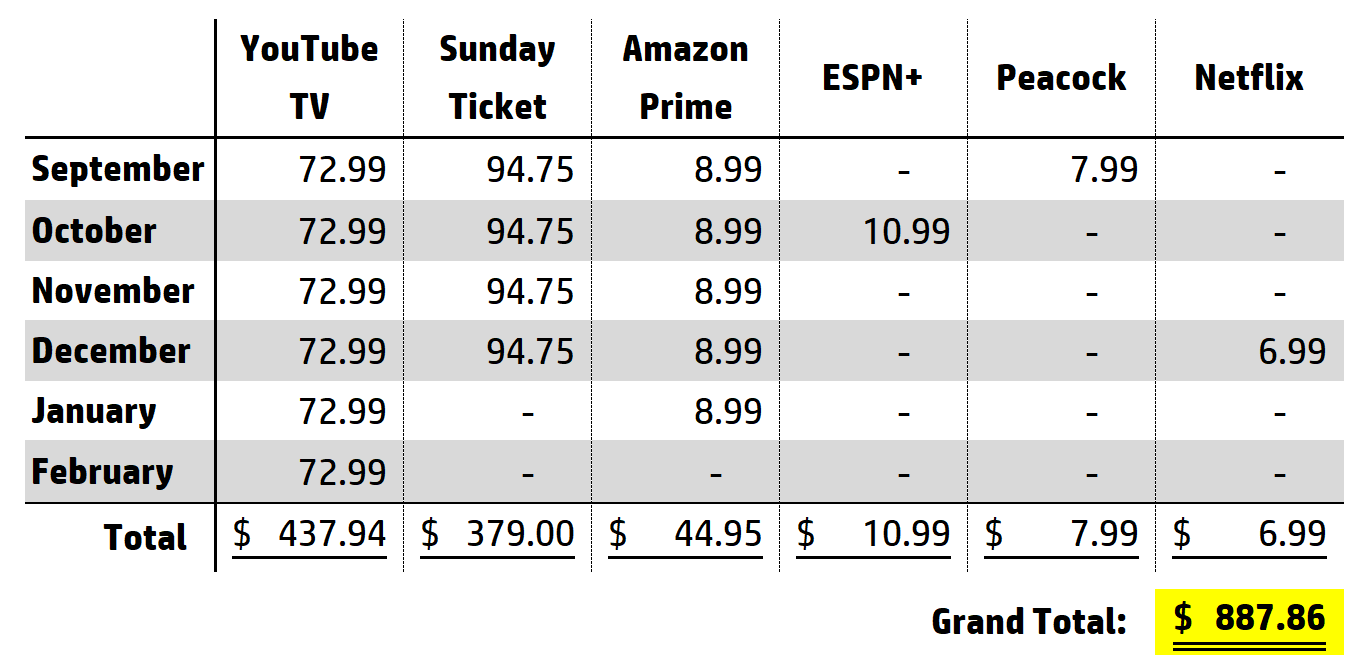
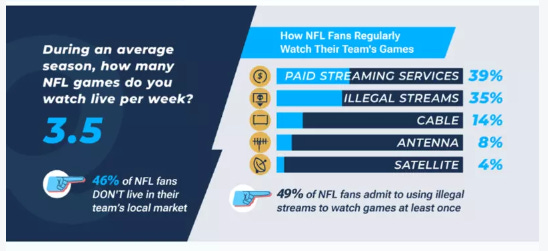
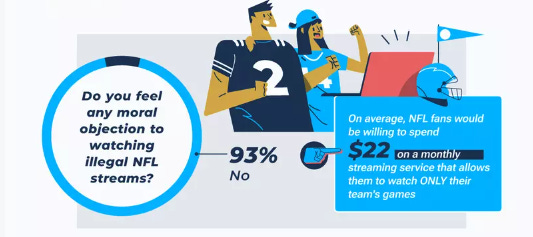
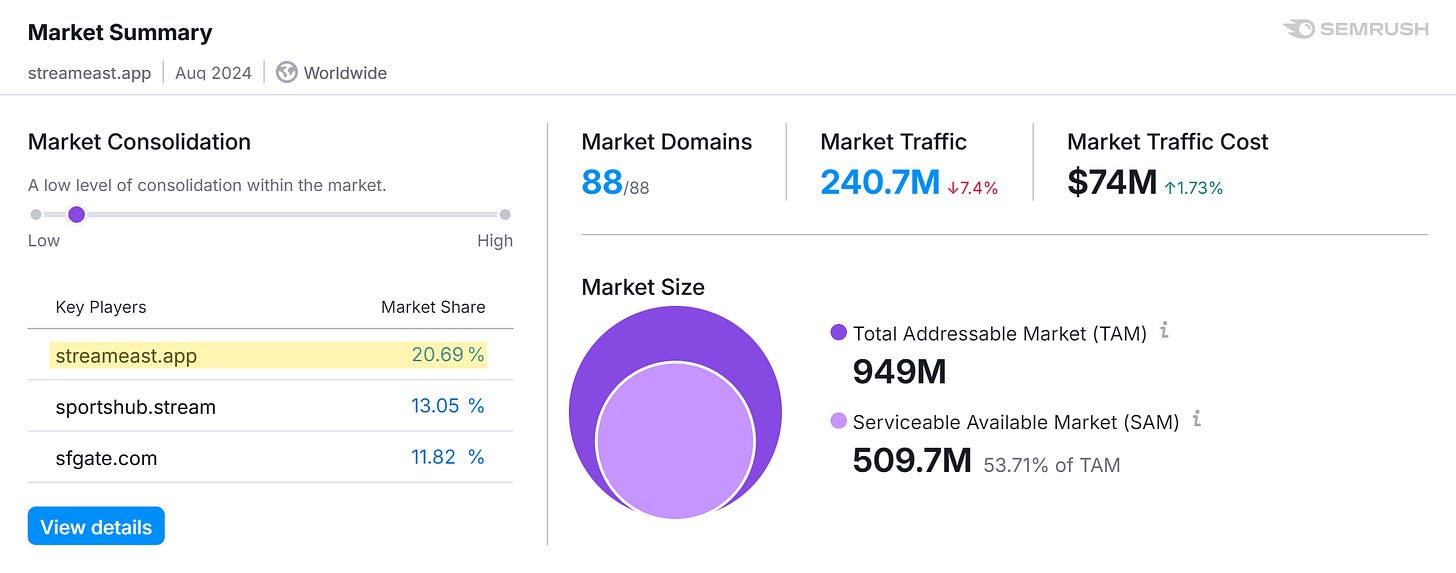


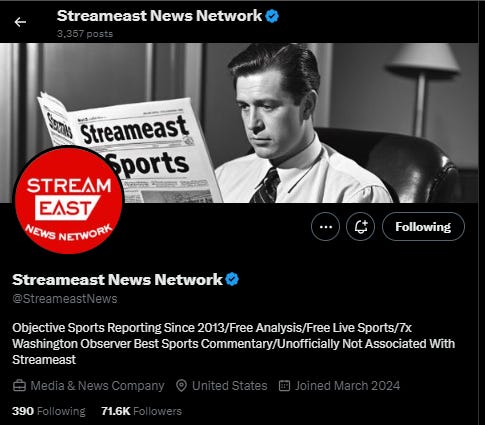
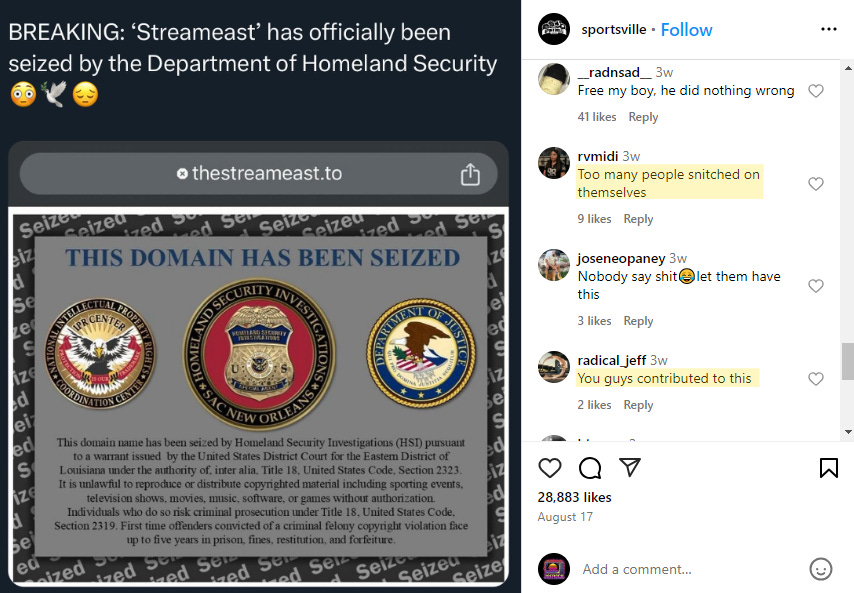

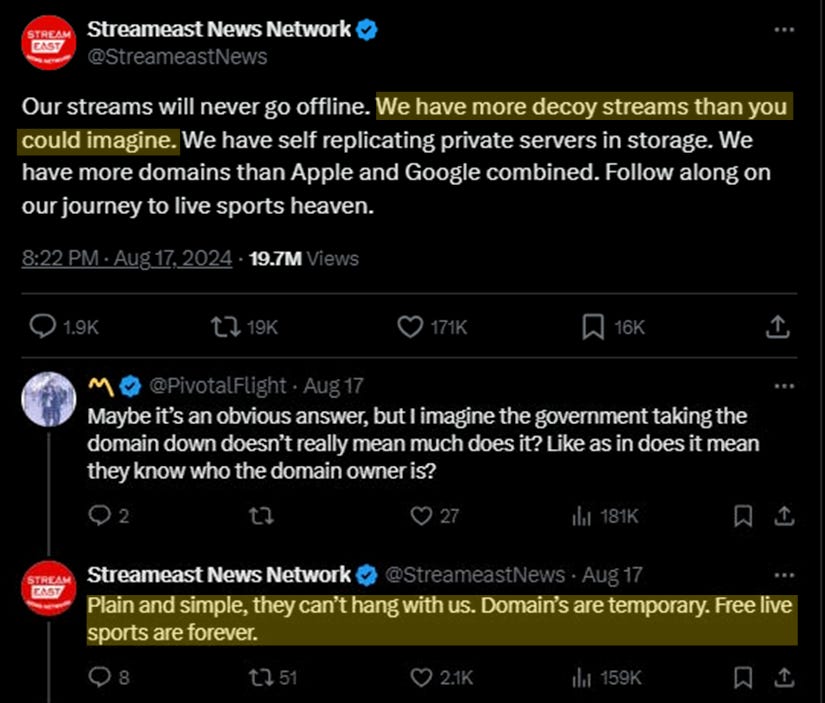
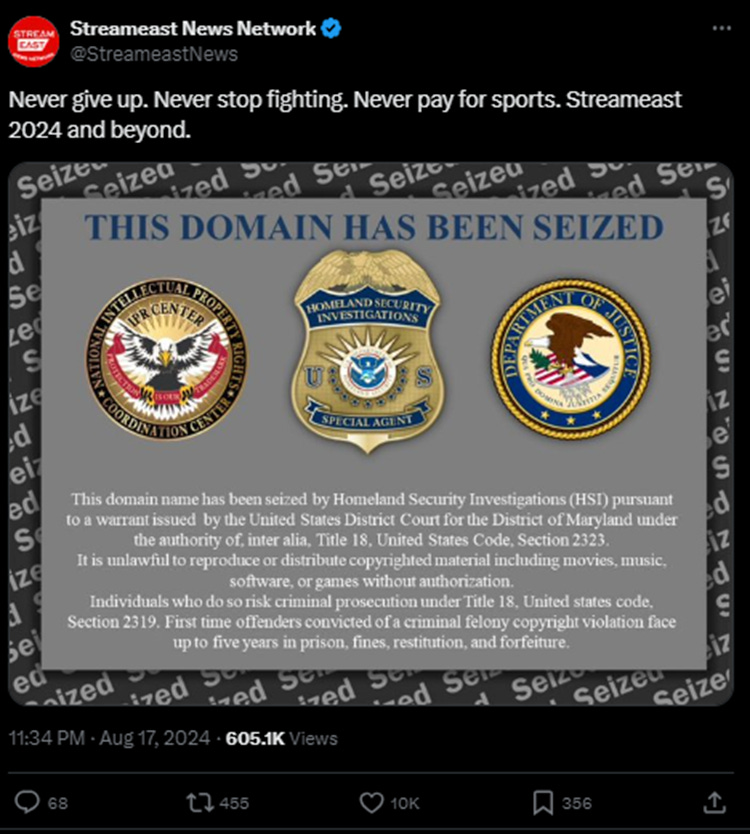
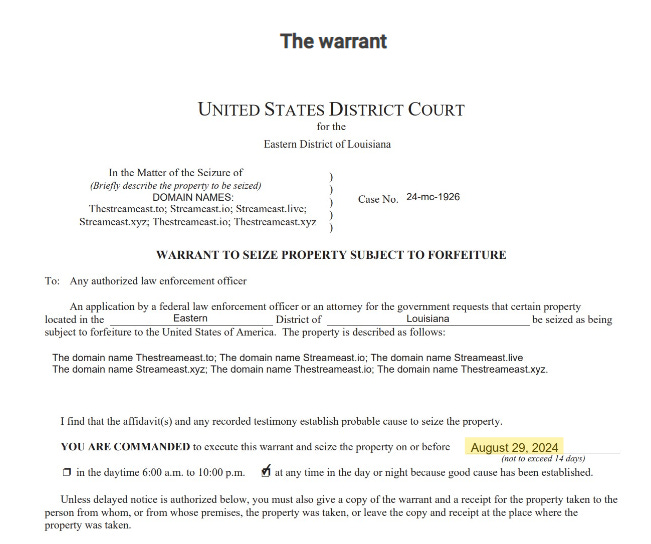
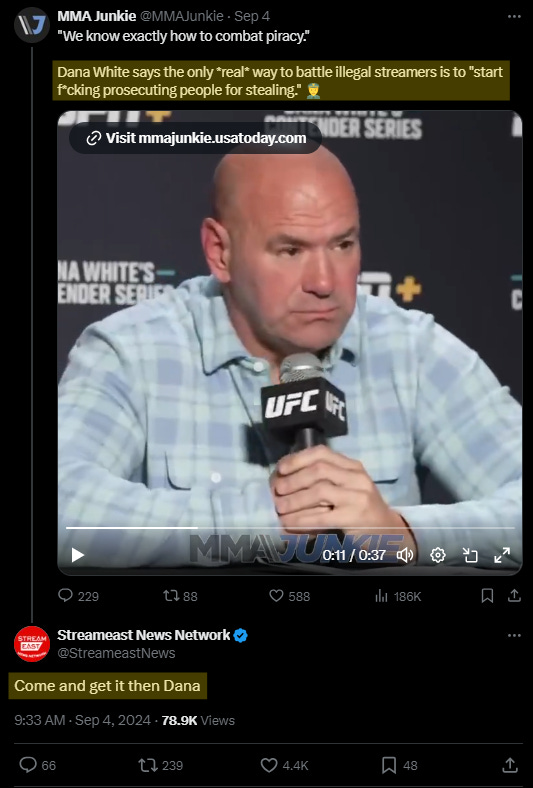
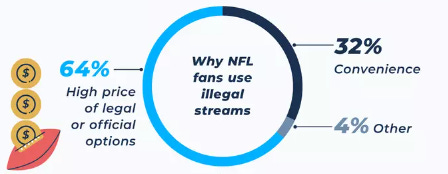
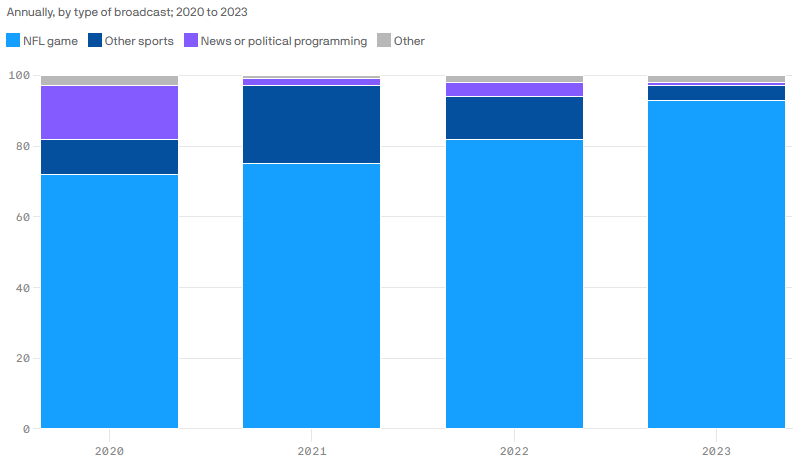
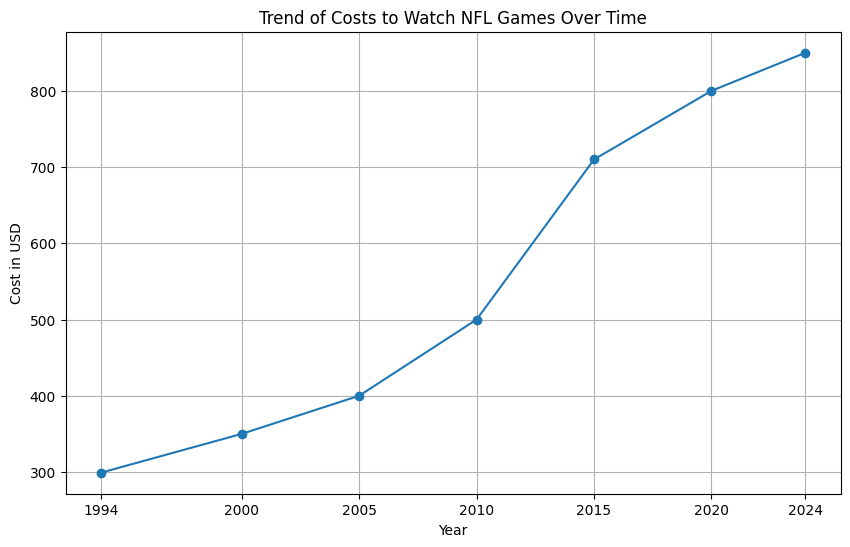
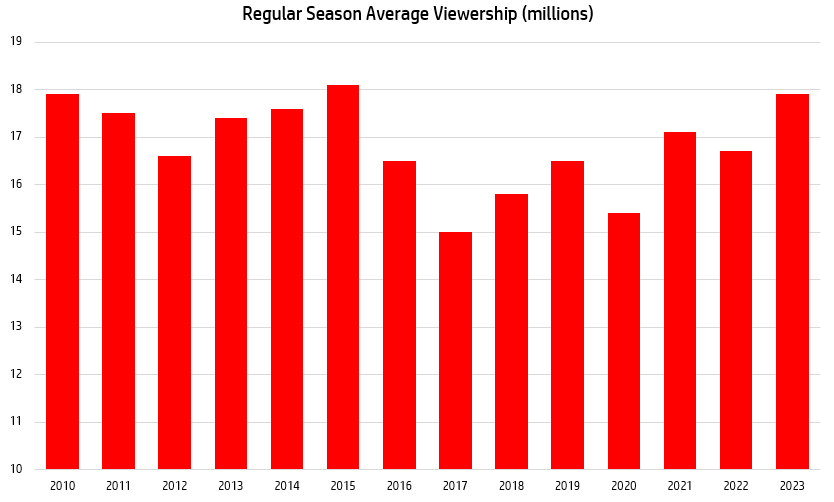
This is a fantastic look at the rise of illegal streaming in the NFL world. Currently, Streameast is king, but if there were no Streameast there would be another Streameast. They are not the issue.
The issue is that the NFL hates Americans. More accurately, they routinely discriminate against Americans. This is an interesting revelation for a league that seems to pride itself so much on being American. They do not hate their core fans. They hate their American core fans, and them only. I've been a loyal NFL fan for about ten years now, and I'm still only paying about $200 (CAD) per season for my (Canadian) NFL Game Pass, which gives all 285 games.
They are not the only business that does this either. Many European and Japanese businesses will double (or more) their product prices for the American market. I friends who've built a very successful side business in England arbitraging the market this way. Americans are used to being scammed economically, but only in their football can they see it, because only the NFL insists on throwing the costs in their face.
Of course, I could defect to Streameast and pay $0, but I don't, because I deem $200 per season reasonable. I doubt I'm the only human that thinks this way, and I've always wondered if a simple Canadian VPN would be a solid investment for those looking to (legally) watch the NFL's product.
William presents a lot of potential solutions for solving this problem, but I am dubious as to whether any of them will be implemented, because sports have a history of not understanding how to properly revenue gouge, because the money involved is (in context of the owners) so small.
Regardless, wonderful read here! I would highly recommend!